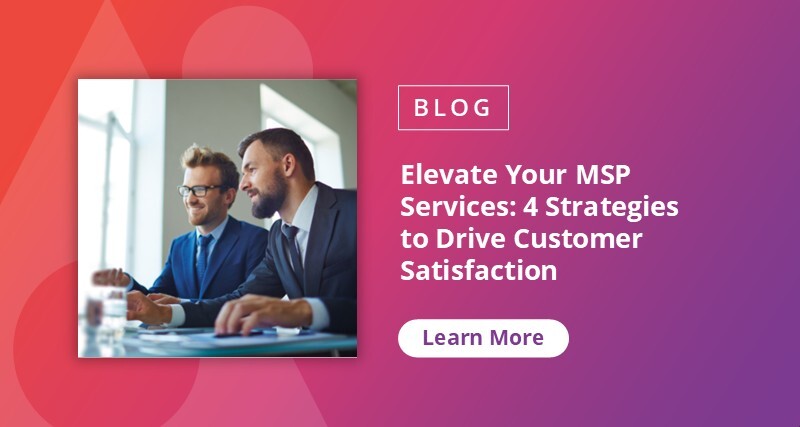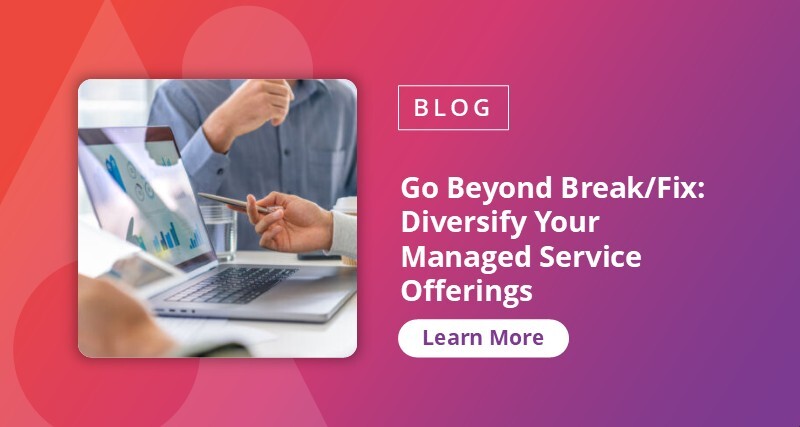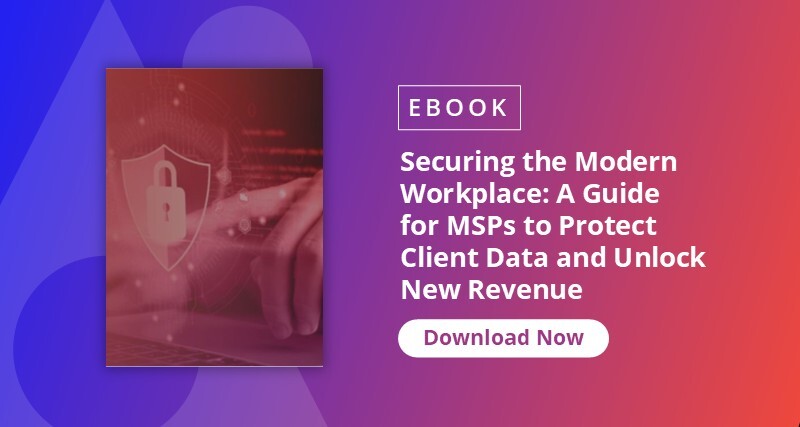Managed service providers (MSPs) face a fundamental challenge: transforming from reactive IT support providers into strategic partners that drive measurable business value. MSPs must keep a pulse on their client’s most pressing needs and how they think, then make fast decisions to retain customers and bring in new business. So, what does that mean for customer service in a platform economy?
According to Canalys, 51% of buyers are millennials with different buying behaviors, preferring to buy via online marketplaces and prioritizing integration first. Today, platforms are synonymous with partnerships and consist not only of products but also of the services supporting them. A successful MSP business involves more than just technical know-how. In a recent survey by Guardz, 45% of respondents said new client acquisition was a top business challenge, 44% highlighted the difficulty in expanding and scaling their services, and 43% pointed to client retention and satisfaction as persistent issues.
This blog explores how MSP and client relationships are changing and how to drive customer retention and recurring revenue streams by improving customer experience, adapting cybersecurity innovation, and optimizing cost management.
Improve Customer Experience
MSPs face a critical challenge: differentiating themselves and ensuring long-term client retention in a highly competitive market. Simply offering basic IT services is no longer enough. The key is to secure higher-value contracts, predictable monthly recurring revenue (MRR), and enhanced service offerings.
Successful MSPs treat customer experience as a strategic differentiator, not just a support function. According to Zendesk CX trends, 77% of business leaders recognize that offering personalized support and experience increases customer retention. It’s just common sense: The more satisfied your customers are, the more likely they are to continue using your services. High retention rates reduce the costs of acquiring new customers and provide a steady revenue stream.
The journey begins with the understanding that every client interaction is an opportunity to demonstrate value and strengthen the relationship. From a seamless onboarding process to a centralized multi-tenant SaaS platform with integrated modules for user and device management, risk monitoring, and workspace governance, every touchpoint contributes to the overall client experience. Leading MSPs implement proactive monitoring of client satisfaction, identify potential issues before they become problems, and ensure clients maximize the value of their technology investments.

Adapt Cybersecurity Innovation
As business risk has shifted from physical to digital, the shortage of technical skills has pushed more customers to outsource to MSPs. The total managed services revenue in the channel will grow 13%, and cybersecurity managed services will grow 15% in 2025. The scope of managed services must now include cybersecurity as a standard rather than an optional add-on, alongside compliance, regulation, and vertical expertise.
Customers today understand better the value of cybersecurity managed services; 71% of small and medium-sized business (SMB) leaders think about their company being breached every day, and 75% spend three to six hours daily managing cybersecurity tools. MSPs can come in to oversee IT infrastructure and build a strategic technology roadmap as AI adoption kicks into gear. But MSPs must go beyond traditional break/fix services to proactive managed services to meet the growing demands of their clients.
However, understanding does not extend to every customer in this challenging year. Budget constraints have burdened the number of customers able to invest, which in turn strains MSPs’ profitability. Partners must therefore not only find methods and tools to offer cyber services without overextending internal resources but also demonstrate to clients that they are a critical factor in reduced IT spend.

Optimize Cost Management
MSPs are trying to save costs to improve profits, which creates a situation where the customer may not be getting the product or service they thought they were paying for. Customer churn increased massively in 2024 as partners lost customers to lower-cost rivals, some of whom may not be providing a significantly better service than the original partner. There is therefore a need to balance cost management and customer satisfaction.
Start with license optimizations to simplify the process for clients and grow MSP monthly revenue by upgrading to better services. Industry reports suggest that around 11% of project licenses are typically unused and can be reclaimed, potentially saving an organization 10,000 users or approximately $40,000 annually on licenses alone. More than half (56%) of Microsoft 365 licenses are inactive, underutilized, oversized, or even completely unassigned.
Accessing a comprehensive intelligent platform that provides visibility into license usage and spending can help in detailed cost analysis, generate exportable reports, and receive actionable recommendations to eliminate duplicate or unused licenses — empowering smarter budgeting and efficient license management. By implementing a strategic approach to licensing optimization, organizations can also streamline infrastructure backup — making it easier to plan, budget, and stay compliant without the complexity of tracking individual instances or services. This optimization can bring more flexibility when managing backup data and avoid out-of-policy issues. Not to mention, offering license optimization services helps boost ever-decreasing margins of license resale.

Strategic Partnership as Competitive Advantage
MSPs are positioning themselves as strategic technology partners, fundamentally changing how they engage with clients and structure their service offerings. Rather than simply maintaining existing systems, MSPs can help clients modernize their technology stack, implement new processes, and leverage emerging technologies like AI and automation to achieve competitive advantages.
Strategic partnerships address a critical market reality: Businesses no longer view IT as a cost center but as a growth enabler. Companies expect their MSPs to understand their business objectives, industry challenges, and growth trajectory. By stepping up to become essential partners in safeguarding client data, MSPs can protect their clients and unlock new revenue streams to solidify their position as trusted advisors in a security and AI-driven world.
Customer experience isn’t just a differentiator — it’s the foundation for long-term retention and growth. As MSPs navigate evolving buyer expectations, cybersecurity demands, and cost pressures, those prioritizing customer needs will stand out. By delivering proactive, personalized, and value-driven service at every touchpoint, MSPs can deepen trust, secure higher-value contracts, and become indispensable partners. Ultimately, it’s not just about managing IT — it’s also about managing relationships that last.
Download eBook to get started - A Guide for MSPs to Protect Client Data and Unlock New Revenue


